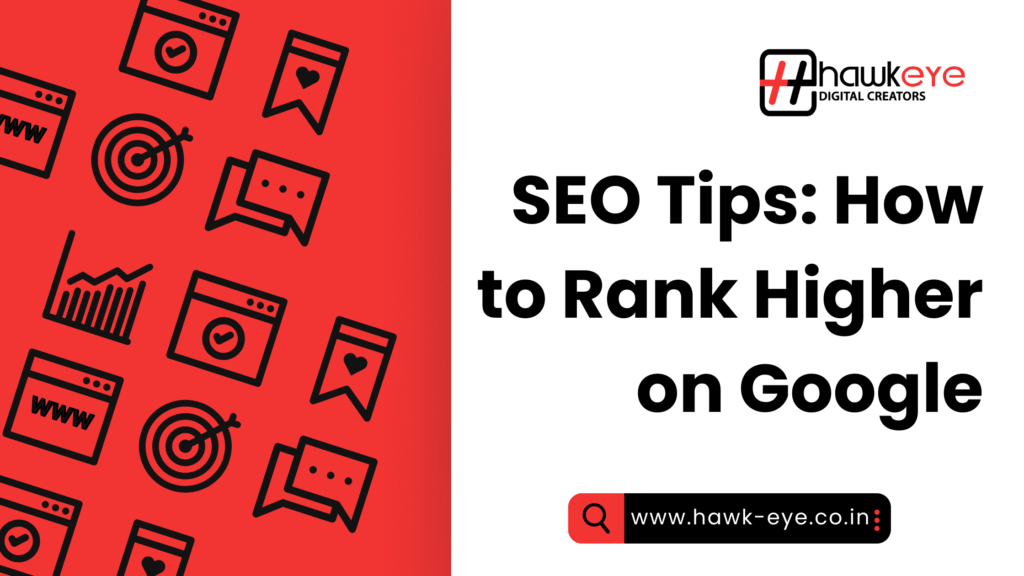How to create SEO-Friendly URLs: Best Guide by Hawkeye Digital Creators
In the world of digital marketing, every component of a website plays a significant role in determining its search engine visibility. One often underestimated but crucial component is the URL structure. Clean, concise, and optimized URLs enhance not just SEO performance but also the user experience.
At Hawkeye Digital Creators, we specialize in offering result-oriented SEO services to clients across the globe. One of the core techniques we emphasize is crafting SEO-friendly URLs that align with best practices and search engine algorithms.
This comprehensive guide will walk you through everything you need to know about creating SEO-friendly URLs—from basic principles to advanced optimization tips.
What is an SEO-Friendly URL?
An SEO-friendly URL is a web address that is easy to read, contains relevant keywords, and clearly explains the page’s content. It’s designed to help both users and search engines understand what the destination page is about.
Examples:
- Good:
https://example.com/seo-friendly-url-guide - Bad:
https://example.com/index.php?id=9843&sort=desc&type=blog
The good URL is short, descriptive, and includes the keyword. The bad URL is long, includes dynamic parameters, and doesn’t give any clue about the content.
Why Are SEO-Friendly URLs Important?
Optimized URLs help with:
- Search Engine Ranking – URLs with relevant keywords improve ranking.
- Click-Through Rate (CTR) – Clean URLs look better in search results and increase clicks.
- User Experience – Users trust readable URLs more and can understand them easily.
- Indexing – Search engines index clean URLs more efficiently.
- Shareability – Easy to copy, paste, and share on social platforms.
In short, an SEO-friendly URL is a foundational element of technical SEO and content discoverability.
How Google Interprets URLs
Google uses URLs to understand a webpage’s topic, structure, and hierarchy. A clear and well-structured URL:
- Helps bots crawl and index the site more effectively
- Shows the relevance of the content through keyword placement
- Improves your website’s internal link juice flow
At Hawkeye Digital Creators, we focus on building URLs that both humans and bots can understand.
SEO-Friendly vs. Non-SEO-Friendly URL: Quick Comparison
| Feature | SEO-Friendly URL | Non-Friendly URL |
|---|---|---|
| Readability | Clear and easy to understand | Confusing and vague |
| Keyword Usage | Contains relevant keywords | None or irrelevant |
| Structure | Short and simple | Long and complex |
| User Experience | High | Low |
| Shareability | Easy to share | Hard to interpret |
| Example | /seo-guide-for-beginners | /blog?id=9982&type=post |
Core Components of an SEO-Friendly URL
- Keywords: Use the primary keyword of the page.
- Hyphens: Separate words using hyphens, not underscores.
- Short and Simple: Under 60 characters is ideal.
- Lowercase Letters: Use lowercase to prevent indexing issues.
- No Special Characters: Avoid symbols like
&,%,$, etc. - Readable Structure: Should be understandable without clicking the link.
- Static Format: Avoid dynamic parameters like
?id=123.
Step-by-Step Guide to Creating SEO-Friendly URLs
Step 1: Use Keywords Wisely
Include your target keyword in the URL. It improves visibility and tells Google what the page is about.
Example:/seo-services-guide ?/page.php?id=2393 ?
Step 2: Keep it Short and Simple
URLs should be descriptive but concise. Avoid unnecessary words and filler text.
Good: /seo-url-basics
Bad: /a-detailed-step-by-step-guide-to-seo-url-optimization
Step 3: Use Hyphens Instead of Underscores
Google treats hyphens (-) as space but not underscores (_).
Use: /best-seo-company
Avoid: /best_seo_company
Step 4: Avoid Special Characters
Avoid using symbols like @, %, &, #, etc., as they confuse bots and break URL integrity.
Bad: /seo@tips&guide
Step 5: Make it Readable
Your URL should be self-explanatory. If someone reads it aloud, they should understand the page’s topic.
Good: /seo-friendly-url-checklist
Bad: /docs/page4/index.php?id=23
Step 6: Use Lowercase Letters Only
Some servers treat uppercase and lowercase URLs as different. Using lowercase avoids duplication.
Good: /seo-services
Bad: /SEO-Services
Step 7: Avoid Stop Words
Words like “and”, “the”, “for”, and “to” can be removed unless essential for clarity.
Better: /seo-guide
Instead of: /a-guide-to-the-best-seo-practices
Step 8: Avoid Dynamic Parameters
URLs with parameters like ?id=983 can dilute keyword relevance and hinder indexing.
Prefer: /seo-tools
Not: /tools.php?id=9832
Step 9: Reflect Website Hierarchy
Maintain a logical structure in your URL to show content flow.
Example: /blog/seo/seo-friendly-url-guide
This structure helps search engines understand the topic and subtopic hierarchy.
Step 10: Use Canonical Tags for Similar URLs
If you have similar content on multiple URLs, use the canonical tag to tell Google which is the preferred version.
Example:
If /seo-url-tips and /seo-url-guide are the same, canonicalize one.
Common Mistakes to Avoid
- Using session IDs or dynamic parameters
- Including irrelevant numbers or auto-generated strings
- Keyword stuffing in URLs
- Changing URLs without redirects
- Mixing uppercase and lowercase
- Skipping canonicalization on duplicate pages
Avoiding these pitfalls improves crawlability, trust, and index accuracy.
Impact of URLs on Internal Linking & Sitemaps
When URLs are clean, they:
- Improve internal anchor text clarity
- Strengthen your sitemap structure
- Increase crawl frequency and indexability
Example:
A post linked internally as /seo-tools is better understood by search engines than /post?id=9392.
At Hawkeye Digital Creators, we optimize not only URLs but also how they fit into your internal linking strategy.
Top Tools to Create and Audit SEO-Friendly URLs
Here are trusted tools that our SEO experts use:
1. Yoast SEO (WordPress Plugin)
Helps check URL length, keyword usage, and structure.
2. SEMrush
Tracks non-optimized URLs and their performance in SERPs.
3. Screaming Frog
Crawls all URLs to detect errors, duplications, and redirects.
4. Ahrefs
Great for analyzing competitors’ URL structure and keyword alignment.
5. Google Search Console
Shows how URLs are indexed, including crawl errors and sitemap submissions.
How Hawkeye Digital Creators Can Help
As the best SEO company offering worldwide SEO services, we provide:
- Full technical audits including URL structure
- Keyword mapping and optimization
- Internal linking and crawl efficiency
- 301 redirect management and canonicalization
- Ongoing monitoring through Search Console & analytics
We ensure your URLs are not only clean and crawlable but also strategically aligned with your content and conversion goals.
Conclusion
Your website URL isn’t just a web address — it’s a powerful SEO asset. By crafting clear, relevant, and keyword-rich URLs, you can significantly improve both search rankings and user engagement.
This guide walked you through the principles, steps, tools, and case studies that prove how impactful SEO-friendly URLs can be.
Need help auditing or building SEO-optimized URLs?
Contact Hawkeye Digital Creators — your partner for smart, scalable, and results-driven SEO services.





